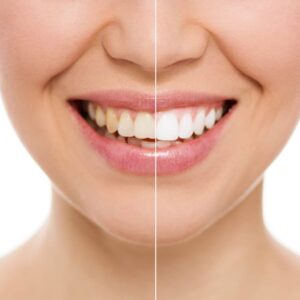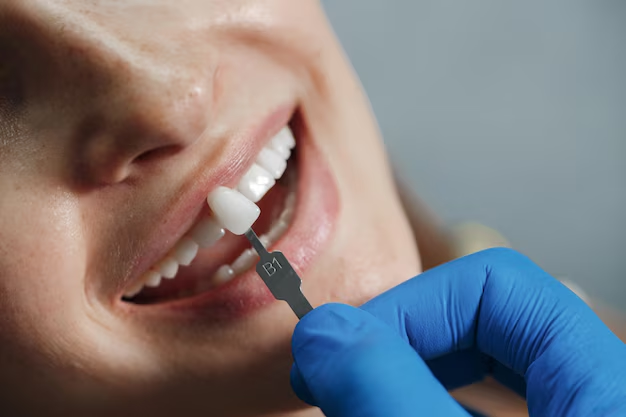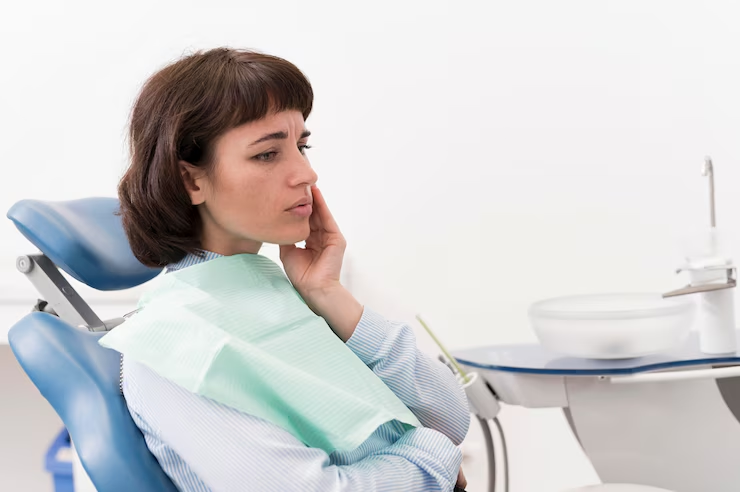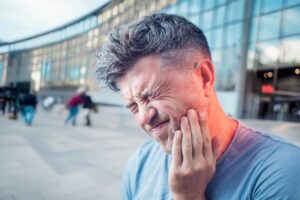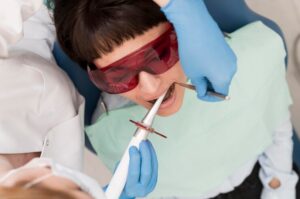When it comes to orthodontic treatment for teens, Invisalign offers a clear advantage—quite literally. As a sleek and modern alternative to traditional metal braces, Invisalign for teens is not just about aesthetics; it’s about providing a comfortable and less invasive option for young adults during a period when self-image and ease of use are paramount. Invisalign Teen aligners are designed with the adolescent lifestyle in mind, offering a solution that aligns teeth effectively while remaining virtually invisible.
Clear aligners for adolescents have revolutionized the way orthodontics is approached, moving away from the conspicuous and sometimes uncomfortable metal brackets to a more discreet method of achieving dental alignment. As a comprehensive guide, we will delve into the specifics of these transparent braces, explore alternatives, and provide a clear orthodontic solution path tailored for teens. Whether seeking information on invisible braces for teenagers or considering Invisalign clear braces for youth, this guide aims to set the stage for a treatment that harmonizes with a teenager’s dynamic life.
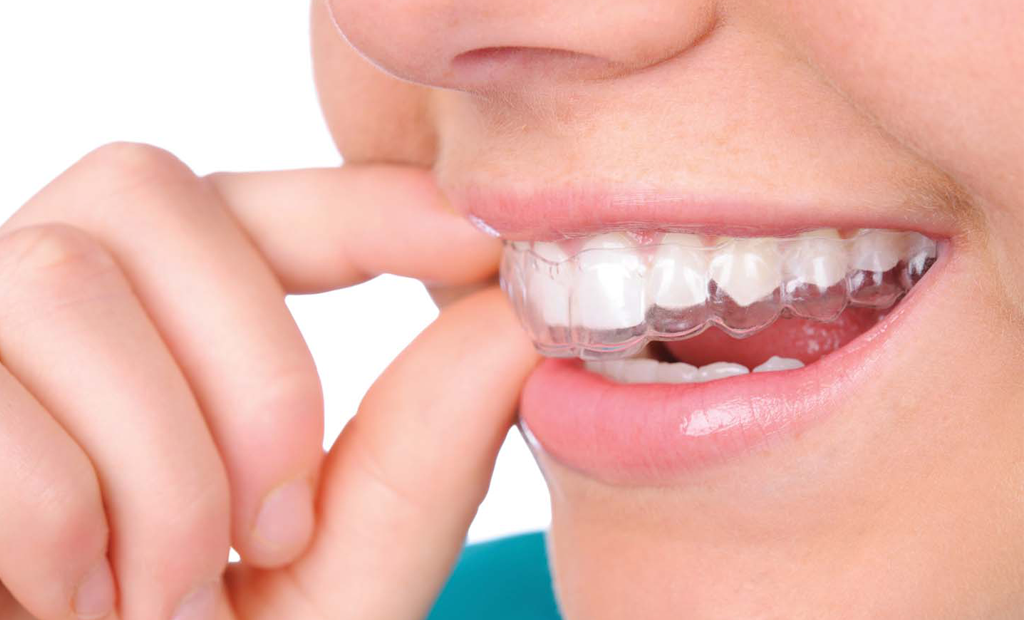
Understanding Invisalign: The Basics for Teens
Invisalign has revolutionized orthodontic treatment, especially for the self-conscious teenage demographic who may shy away from traditional metal braces. Often referred to as “invisible braces for teenagers,” Invisalign offers a less noticeable solution to straightening teeth. So, what exactly is Invisalign? It’s a series of clear, removable aligners custom-made to fit snugly over the teeth and gradually shift them into the desired position. Unlike the fixed brackets and wires of yesteryears, Invisalign aligners are made of a smooth, comfortable plastic material that is virtually invisible when worn.
The process begins with a specialized dentist or orthodontist evaluating the teen’s dental structure and devising a plan for teen orthodontic treatment. This plan includes a series of Invisalign Teen aligners that are replaced every few weeks to accommodate the shifting teeth. The beauty of these clear aligners for adolescents is that they can be removed when eating, brushing, or for special occasions, making them a versatile option for young adults’ active lifestyles. Moreover, Invisalign clear braces for youth are designed with compliance indicators to help track the amount of time they are worn, ensuring effective treatment.
Is Invisalign suitable for all teens?
Not all teenagers are candidates for Invisalign. The suitability often depends on the complexity of the dental issues and the teen’s commitment to wearing the aligners consistently. Invisalign alternatives for teenagers may be recommended if their orthodontic needs are more complex.
How long does a teen need to wear Invisalign aligners each day?
It is recommended that Invisalign aligners be worn for 20 to 22 hours a day for optimal results. They should only be removed for eating, drinking anything other than water, brushing, and flossing. This discipline in wearing the aligners is crucial for the success of the treatment.
Invisalign for teens is a modern and efficient approach to orthodontics, offering a transparent braces guide for adolescents that can align with their busy and social lifestyles. As with any medical treatment, it is essential to consult with a qualified professional to determine if Invisalign is the right teen dental alignment guide for your specific needs.
Determining the Right Age for Invisalign Treatment
When it comes to orthodontic treatment for teenagers, timing is everything. Parents and teens alike often wonder about the appropriate age to begin using Invisalign—clear aligners that offer a less visible alternative to traditional braces. The right age for Invisalign treatment tends to be a common question, and to address this, it’s important to consider several factors.
Firstly, Invisalign Teen aligners are specifically designed for adolescents whose teeth are still developing. This often corresponds to the age range of 13 to 18 years, a period when most teens have lost all their baby teeth and their permanent teeth have erupted. It’s during these teen years that orthodontic issues become apparent, and it’s also a time when social appearance becomes increasingly important—making clear orthodontic solutions like Invisalign an appealing option.
Secondly, the maturity of the teen plays a crucial role. Invisalign requires discipline in wearing the aligners for the recommended 22 hours a day. Teenagers who demonstrate responsibility and commitment to their dental health are ideal candidates for this treatment. Moreover, clear aligners for adolescents are designed with compliance indicators to help ensure the teens are wearing them enough to achieve the desired results.
In conclusion, while there is no one-size-fits-all answer to the question of the right age for Invisalign, most teens become suitable candidates once they hit their early teenage years and exhibit the maturity needed for the treatment. For those seeking alternatives, there are Invisalign alternatives for teenagers that can be discussed with an orthodontist. However, Invisalign Teen aligners remain a leading choice for teen orthodontic treatment due to their effectiveness and the discretion they offer young adults concerned about their appearance.
For more specific advice related to your teen’s unique case, consult with a certified orthodontist who can provide a personalized assessment and guide you through the available clear orthodontic solutions for teens.
Invisalign Treatment Timeline for Teens
Embarking on the journey of orthodontic treatment with Invisalign Teen aligners can be an exciting time for adolescents and their families. It promises a future of bright smiles and improved dental alignment. But understanding the timeline of this treatment is crucial for setting expectations and ensuring the best outcomes.
Duration of Treatment: Generally, the duration of Invisalign treatment for teens is comparable to that of traditional braces. It ranges from 6 to 24 months, with an average of about 12 to 18 months. However, the specific timeline varies depending on individual factors such as the complexity of the case and how diligently the aligners are worn.
Patient Compliance: One of the essential factors influencing the timeline is how consistently teens wear their aligners. Invisalign recommends 20 to 22 hours of wear per day. Failure to adhere to this can prolong treatment time.
Complexity of Dental Issues: The initial condition of the teen’s teeth also plays a role. More complex orthodontic issues, like severe overcrowding or bite discrepancies, may extend the time needed for alignment.
Invisalign Check-ups: Regular check-ups, typically every 4 to 6 weeks, are necessary to monitor progress and make any adjustments. These appointments are a crucial part of staying on track with the treatment timeline.
Lifestyle Considerations: Active teens involved in sports or other activities may need additional time if aligners are not worn during these activities. Furthermore, the loss or damage of aligners can lead to treatment delays.
By considering these factors and following the clear orthodontic solutions for teens as prescribed, young adults can achieve their desired results within the expected treatment window. Remember, patience and adherence to your orthodontist’s guidance are the keys to a successful Invisalign journey.
Lifestyle Considerations: Diet, Sports, and Speech
When considering Invisalign for Teens, it’s important to address common concerns that parents and young adults may have regarding lifestyle limitations. The appeal of Invisalign Teen aligners lies in their ability to blend seamlessly with everyday activities, but questions often arise about diet restrictions, sports participation, and the impact on speech. Here, we’ll dive into these topics to provide clarity and confidence in choosing Invisalign as the teen orthodontic treatment choice.
Diet Flexibility: Unlike traditional braces, Invisalign clear braces for youth don’t impose significant dietary restrictions. Since the aligners are removable, teens can continue to enjoy their favorite foods without fear of damaging their orthodontic appliance. However, it’s essential to maintain good oral hygiene by brushing and rinsing after meals before putting the aligners back in.
Active Lifestyle Compatibility: For adolescents leading active lives, particularly those involved in sports, Invisalign offers a distinct advantage. The lack of metal brackets and wires reduces the risk of injury during physical activities. Moreover, Invisalign Teen aligners can be temporarily removed for added comfort and protection during contact sports—just be sure to safeguard the aligners and wear a mouthguard.
Speech Adaptation: Transitioning to speaking with aligners may take some time, but most teens quickly adapt without long-term speech impact. The transparent braces guide for adolescents suggests practicing speaking at home to accelerate the adjustment period. Any initial lisping or discomfort typically fades as the tongue gets accustomed to the presence of the aligners.
Invisalign and Oral Health: Embracing the clear orthodontic solutions for teens also means embracing a commitment to oral health. Invisalign aligners should be cleaned regularly to prevent bacteria buildup, and teens must brush their teeth after each meal to ensure the aligners remain invisible and effective.
Appearance and Confidence: For teenagers, image is everything. Invisalign clear aligners provide a discreet way to achieve dental alignment, boosting self-esteem and reducing the self-consciousness often associated with metal braces. This invisible braces option for teenagers ensures that the focus remains on the individual, not their orthodontic treatment.
By understanding these key lifestyle considerations, teens and parents can make an informed decision about Invisalign alternatives for teenagers. Remember, every case is unique, and consulting with an orthodontist is crucial to determine the best clear aligner path for adolescent orthodontic needs.
Maintaining Oral Hygiene with Invisalign
For teenagers, maintaining oral hygiene while using Invisalign Teen aligners is crucial for ensuring the effectiveness of the orthodontic treatment and keeping a healthy smile. Unlike traditional braces, Invisalign clear braces for youth offer a more flexible and hygienic option, but they still require commitment to proper care. Here are some valuable tips and best practices for oral hygiene and aligner maintenance based on frequently asked questions:
Daily Cleaning Routine: It’s essential to establish a daily routine for cleaning both your teeth and your Invisalign aligners. Brush your teeth thoroughly twice a day and floss regularly to remove any food particles and plaque. Clean your aligners with a soft-bristled toothbrush and lukewarm water; avoid hot water as it can warp the plastic.
Avoid Certain Foods and Drinks: While Invisalign Teen aligners allow the flexibility to eat and drink without restrictions, it’s advisable to avoid sugary and acidic beverages, as they can lead to tooth decay and aligner discoloration. Always remove your aligners before eating or drinking anything other than water.
Regular Dental Checkups: Schedule regular checkups with your orthodontist to monitor the progress of your teen orthodontic treatment. These visits are an excellent opportunity to ask questions and ensure that the Invisalign treatment is proceeding as expected.
Aligner Care During Sports: If you’re involved in sports or physical activities, remember to protect your aligners and teeth. Use a mouthguard over the Invisalign aligners during contact sports to prevent any possible damage.
Storage and Handling: Always store your Invisalign clear aligners in their protective case when not in use. This prevents loss and contamination. Handle the aligners with clean hands to avoid transferring bacteria to your mouth.
Follow the Treatment Plan: Adherence to your orthodontist’s prescribed treatment plan is vital. Wear the aligners for the recommended 20-22 hours per day, and switch to your new set of aligners on time to ensure the best results for your teen dental alignment guide.
By following these tips, teenagers can effectively maintain their oral hygiene and get the most out of their clear orthodontic solutions. Remember, proper care of your Invisalign Teen aligners is a step towards a healthier, more beautiful smile that will last a lifetime.
Wearing Schedule and Compliance: Ensuring Success
One of the key factors in the successful treatment with Invisalign for Teens is adherence to the recommended wearing schedule. It’s crucial for teenagers and their guardians to understand that Invisalign aligners are designed as a clear orthodontic solution that requires a commitment to wearing the aligners as prescribed by an orthodontist. Unlike traditional braces, Invisalign Teen aligners offer the flexibility of being removable, which means that the responsibility largely falls on the wearer to maintain consistent use.
The recommended wearing time for Invisalign clear braces is typically around 20 to 22 hours per day. This schedule allows for the necessary pressure to be applied to the teeth to guide them into the correct position gently and effectively. For adolescents, who are often involved in various activities and have busy schedules, it’s important to integrate this orthodontic treatment into their daily routines. Failure to wear the aligners for the appropriate amount of time can lead to extended treatment periods, increased costs, and potentially less effective results.
Consistency is Key: Invisalign treatment for teens relies heavily on consistent wear. Teen orthodontic treatment is most effective when aligners are worn as close to 22 hours a day as possible. This level of discipline ensures that the teeth are being moved continuously, leading to more predictable and desirable outcomes.
Flexibility with Responsibility: While Invisalign aligners offer the benefit of being invisible braces for teenagers, they come with the responsibility of remembering to wear them after each meal and after cleaning. It’s a clear orthodontic solution that depends on the wearer’s ability to manage their treatment.
Monitoring Progress: Many Invisalign Teen aligners come with compliance indicators that fade with wear, helping both orthodontists and parents monitor usage. This feature of the clear aligners for adolescents is a great tool to ensure that the treatment is on track.
Balancing Activities: Teenagers involved in sports, music, or other extracurricular activities can benefit from the removability of Invisalign clear braces. However, it’s vital to remember to put them back in immediately after the activity to maintain the required wearing schedule.
Support System: Having a supportive environment is essential. Parents and guardians play a significant role in reminding and encouraging their teens to wear their Invisalign aligners consistently, ensuring the success of the teen dental alignment guide.
By understanding the importance of wearing schedule and compliance, teenagers can maximize the effectiveness of their Invisalign treatment and move towards achieving a beautifully aligned smile. For those considering Invisalign alternatives for teenagers, it’s important to weigh the benefits of a transparent braces guide for adolescents against the commitment required to ensure success. With the right approach and dedication, Invisalign for Teens can be an excellent orthodontic treatment option.
Dealing with Lost or Damaged Aligners
Invisalign for Teens has revolutionized orthodontic treatment, offering a clear and comfortable alternative to traditional braces. However, mishaps can occur, and it’s not uncommon for adolescents to lose or damage their Invisalign Teen aligners. This can be a source of stress for both teens and their parents, as any delay in the treatment can prolong the process. Here’s a comprehensive guide on how to handle such situations, ensuring that teen orthodontic treatment remains on track.
Immediate Action: If an aligner is lost or damaged, the first step is to contact your orthodontist without delay. They can provide professional advice and facilitate a quick solution. It’s important to maintain the treatment schedule to ensure the effectiveness of the clear orthodontic solutions for teens.
Temporary Solutions: While waiting for a replacement, your orthodontist might suggest wearing the previous set of aligners to prevent teeth from shifting back to their original position. This serves as a temporary fix until new Invisalign clear braces for youth are available.
Understanding Coverage: Check your orthodontic treatment plan or dental insurance to understand the coverage for lost or damaged aligners. Some plans include provisions for replacements, which can alleviate the cost of unexpected replacements of transparent braces for adolescents.
Preventive Measures: To avoid future incidents, encourage your teen to always store their aligners in the designated case when not in use. Educating teens on the importance of handling their clear aligners for adolescents with care can prevent damage.
Aligner Care: Proper maintenance of Invisalign Teen aligners is crucial. Regular cleaning and avoiding exposure to heat can extend the life of the aligners and prevent them from warping or cracking, which is part of an effective teen dental alignment guide.
By following these guidelines, dealing with lost or damaged aligners can be a minor hiccup in the journey to a perfect smile. It’s essential to remain calm, act promptly, and communicate with your orthodontist to navigate through the issue with minimal impact on the overall treatment timeline. Remember, with the right approach, Invisalign alternatives for teenagers can be just as effective and convenient as the original option, providing a seamless continuation of care for all young adults committed to improving their dental health.
“Invisalign for teens is more than just an orthodontic treatment; it’s a stepping stone towards a future filled with confident smiles. At Fab Dental, we understand that each teenager’s smile is unique, and with Invisalign, we can cater to their individual needs while allowing them to enjoy their lives unhindered by the constraints of traditional braces. It’s not just about straight teeth; it’s about giving teens the freedom to be themselves, while we take care of aligning their path to a perfect smile.”
— Dr. Guneet Alag, DDS, FAGD, Fab Dental, Hayward, CA
Invisalign Treatment Costs and Insurance Coverage
Understanding the financial commitment involved with Invisalign treatment for teens is crucial for families considering this orthodontic option. Invisalign, often regarded as a less intrusive and more aesthetic alternative to traditional braces, can be a substantial investment. However, the total cost can be mitigated with insurance coverage and various payment options, making it a feasible choice for many.
Insurance Plans: Most dental insurance plans that cover orthodontic treatment will typically provide coverage for Invisalign Teen aligners to the same extent as conventional braces. It’s important for families to consult with their insurance provider to understand the specifics of their coverage, including the percentage of the cost covered and any limitations or caps that may apply.
Out-of-Pocket Costs: For expenses not covered by insurance, orthodontists often offer flexible payment plans to spread the cost over the duration of the treatment. These plans can include monthly installments that make the financial aspect of teen orthodontic treatment more manageable for parents.
Invisalign Payment Programs: Some providers participate in payment programs specifically designed for Invisalign treatments, such as CareCredit. These programs can offer interest-free periods or extended financing options to help reduce the immediate financial burden.
Flexible Spending Accounts (FSAs) and Health Savings Accounts (HSAs): Families with FSAs or HSAs can use these pre-tax dollars to pay for Invisalign treatments, resulting in significant savings. It’s essential to plan these expenditures in line with your account’s contribution limits and rules.
Comparing Costs with Alternatives: When considering Invisalign, it’s beneficial to compare the costs with other orthodontic solutions for teens, such as traditional metal braces or other clear aligner brands. Understanding the value and benefits of each option in relation to their cost will help in making an informed decision.
Long-Term Investment: While analyzing immediate costs is important, considering the long-term benefits of Invisalign for teenagers is equally valuable. Improved dental health, convenience, and the confidence that comes with a better smile are intangible benefits that can outweigh the initial financial outlay.
In conclusion, while the costs associated with Invisalign for teens might seem daunting at first, insurance coverage, payment options, and other financial strategies can make it an attainable solution for teen dental alignment. It’s advised to discuss these financial aspects with your orthodontist and insurance provider to ensure a clear understanding of the investment and the available support to manage it.
Conclusion
As we reach the end of our comprehensive guide on Invisalign for Teens, we hope that the insights provided have illuminated the path for teenagers and parents alike in the journey towards a brighter, more confident smile. It’s clear that Invisalign Teen aligners offer a modern, nearly invisible braces option for teenagers who are conscious about their appearance during orthodontic treatment. The benefits of clear aligners for adolescents are numerous, including the flexibility to remove the aligners during meals and the ease of maintaining proper oral hygiene.
However, it’s crucial to remember that each smile is unique, and therefore, personalized advice from a qualified orthodontist is indispensable. Orthodontics for young adults can be complex, and only a professional can determine if Invisalign clear braces for youth are the best choice for your individual needs. They can also discuss Invisalign alternatives for teenagers if necessary. We urge you to use this guide as a starting point and seek a consultation with an orthodontist who can provide tailored guidance for your teen’s dental alignment.
In summary, whether it’s choosing between Invisalign or other transparent braces options for adolescents, understanding the importance of adherence to the treatment plan, or exploring the intricacies of teen orthodontic treatment, an informed decision is a powerful one. Refer back to this guide as you navigate the decision-making process and remember that the ultimate goal is achieving optimal dental health and aesthetics that will serve your teen well into adulthood. Your journey towards a beautiful smile begins with knowledge and ends with the invaluable expertise of your orthodontist.
FAQs: Invisalign for Teens: A Comprehensive Guide
What is Invisalign, and how does it work for teens?
Invisalign is a modern orthodontic treatment that uses a series of clear, custom-made, removable aligners to straighten teeth. For teens, it works by gradually shifting teeth into the desired position without the use of traditional metal braces. Each aligner is worn for about one to two weeks before moving on to the next in the series, progressively aligning the teeth.
Is Invisalign as effective as traditional braces for teens?
In many cases, Invisalign can be just as effective as traditional braces for correcting common dental issues in teens, such as overcrowding, gaps, and certain bite irregularities. However, the effectiveness can vary depending on the complexity of the case and how consistently the teen wears the aligners.
How long does Invisalign treatment typically last for teens?
The duration of Invisalign treatment for teens can vary depending on the severity of the dental issues being corrected. On average, treatment can last anywhere from 6 months to 2 years. An orthodontist can provide a more personalized timeline after assessing the teen's teeth.
Can teens eat and drink with Invisalign aligners?
Teens should remove their Invisalign aligners before eating or drinking anything other than water. This prevents damage to the aligners and helps maintain oral hygiene. After eating, it's important to brush and floss before putting the aligners back in.
How often do teens need to wear their Invisalign aligners each day?
For optimal results, teens should wear their Invisalign aligners for 20 to 22 hours per day. They should only be removed for eating, drinking, brushing, and flossing.
Are there any restrictions on activities or sports for teens using Invisalign?
There are no specific restrictions on activities or sports. Since Invisalign aligners are removable, teens can take them out during contact sports and replace them with a standard mouthguard for protection. However, it's important to remember to wear the aligners for the recommended daily duration.
How do teens maintain their Invisalign aligners?
Teens should clean their Invisalign aligners daily using a soft-bristled toothbrush and lukewarm water. Abrasive toothpaste and hot water should be avoided as they can damage the aligners. Additionally, Invisalign cleaning crystals or tablets can be used for deeper cleaning.
Will Invisalign affect a teen's speech?
Some teens may experience a slight lisp when they first start wearing Invisalign aligners. However, this is usually temporary and tends to disappear as they become accustomed to the aligners.
What happens if a teen loses or damages an Invisalign aligner?
If an aligner is lost or damaged, it's important to contact the orthodontist right away. The orthodontist may advise the teen to wear the previous aligner or move onto the next one in the series until a replacement is provided.
How often do teens need to visit the orthodontist during Invisalign treatment?
Teens typically need to visit their orthodontist every 4 to 6 weeks to monitor progress and receive new sets of aligners. These appointments are crucial for ensuring the treatment is progressing as planned.
Is Invisalign treatment more expensive than traditional braces for teens?
The cost of Invisalign treatment can be comparable to that of traditional braces, but it varies depending on the individual case and treatment length. Many dental insurance plans cover Invisalign just as they would traditional braces, so it's important to check with the insurance provider.
Can all teens use Invisalign, or are there certain requirements?
While many teens are good candidates for Invisalign, not all dental issues can be treated with aligners. Factors such as the complexity of the case, oral hygiene habits, and the teen's commitment to wearing the aligners as directed can influence eligibility. An orthodontist can determine if Invisalign is the right option.
What are the benefits of choosing Invisalign over traditional braces for teens?
Invisalign offers several benefits, including improved aesthetics due to the clear aligners, ease of oral hygiene since they are removable, and fewer dietary restrictions. Additionally, the smooth plastic aligners can be more comfortable and cause less irritation than metal braces.

